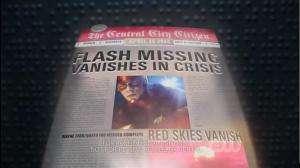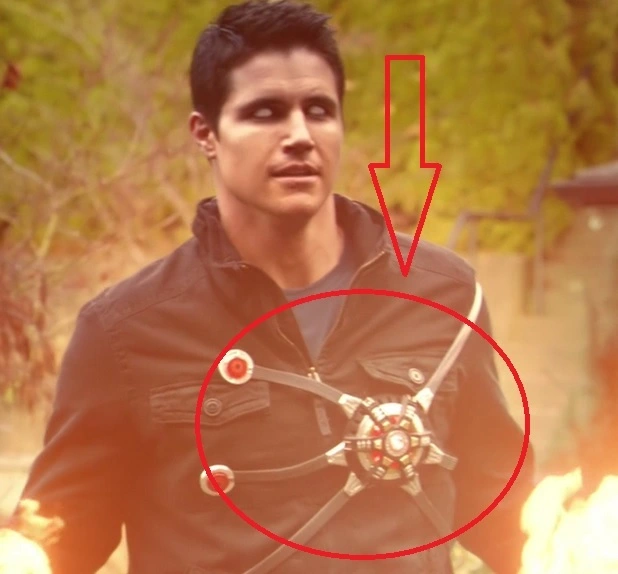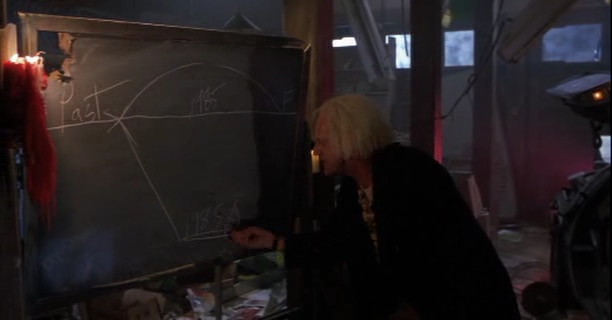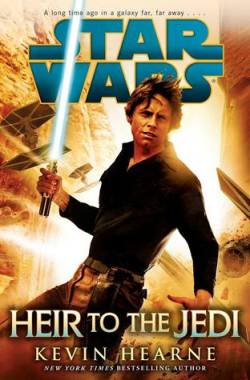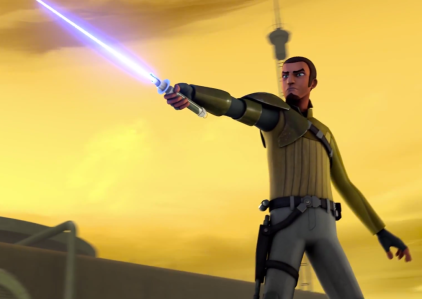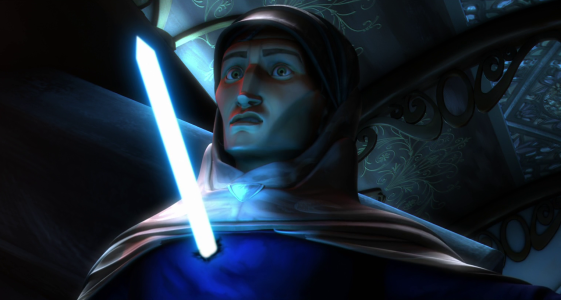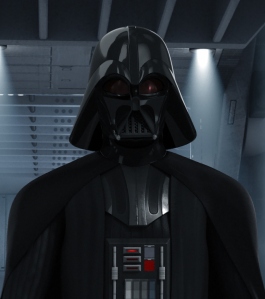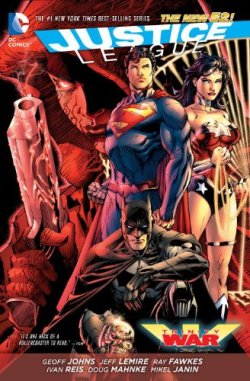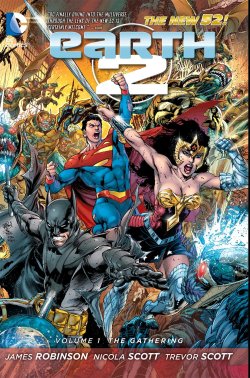What follows contains spoilers for season 1 of THE FLASH.
Before we get to the spoiler-y stuff let me say:
In my previous post I predicted that Wells would be shown as the Reverse Flash. That’s one in a row!
The Weather Wizard is the star of an upcoming episode. When they killed Clyde Mardon in the pilot episode I said Clyde was not the Weather Wizard. The true Weather Wizard was either Mark or Marco depending on your Flash and that we’d eventually he’d try to avenge his brother. Welcome aboard, Liam McIntyre, THE WEATHER WIZARD!
I have no idea what they plan to do with Grodd, but I hope it centers on his controlling General Eiling, all the toys he brings with him, and a war of domination on Central City.
Eventually someone in authority will find out STAR Labs has a super powered jail cell beneath it holding a number of people who’ve never stood trial. Hilarity will ensue. It’ll be even better if a Grodd-controlled Eiling orders the release of the super criminals and wages war on the Flash. Season 2 beckons!
Ok, enough spoiler space. Time to talk about what’s really important…

Oh. Yeah.
In The Matrix: Revolutions (go with me here), Agent Smith – a computer program – leaves the Matrix and inhabits the real world body of “Bane”, one of the other people freed from the Matrix. While Bane’s body remained the same his consciousness was different – the original man was replaced by the consciousness of Agent Smith. To look at him you’d never know the difference but once Neo looks at him – looks through the meat and bone – he sees that it’s Agent Smith on the inside. When defining “who” someone is, the shell is irrelevant. It’s the consciousness that matters
We know that shell of Harrison Wells is the Reverse Flash. Despite this reveal – and it was a great reveal – we still don’t know who Harrison Wells truly is on the inside. Here are some of the internet’s best guesses as to who is Harrison Wells on the inside? Is Harrison Wells:
- Eobard Thawne (Reverse Flash) time travelled back to the past?
- Hunter Zolomon (Zoom) time travelled back to the past?
- A future version of Barry Allen travelled back to the past?
- Barry Allen from an alternate Earth?
- Metron of the New Gods?
- Abra Kadabra come back from the 64th century?
See what I mean? Even though we know Harrison Wells is the Reverse Flash WE STILL DON’T KNOW WHO HE IS.
I’ll list what we do know about Wells and see if that helps. We know that Wells:
- has the powers of the Flash while in the Reverse Flash suit;
- super-speed powers are spotty while not in the Reverse Flash suit;
- uses the tachyon device to collect the Speed Force;
- will kill (Simon Stagg);
- will remove Barry’s enemies who know Flash’s secret identity – Girder (freed by Wells, killed by Blackout), General Wade Eiling (hand-delivered to Grodd);
- has access to advanced technology including a sentient computer (Gideon) and a newspaper from 2024;
- is a widower. His wife was named Tess Morgan and she died in a car crash several years ago; and
- knew Barry was destined to be the Flash (watched the video of Barry being struck by lightning).
Summed up what we know for sure that Wells
- will do anything to protect the Flash;
- drove Barry into becoming a hero;
- convinced Joe that Barry being a hero is for the best;
- is driving Barry to get faster and faster; and
- is concerned with a future “Crisis”.
Sum it up and what does it mean? A driven scientist who will do anything knows an accident creates a hero. I do not think it’s a stretch to say that Harrison Wells caused the accident that created the Flash on purpose. Now, we know for 100% sure Wells is the Reverse Flash but we are not 100% sure that Wells killed Nora Allen. I will go on the assumption that Wells is the Reverse Flash who killed Nora. We won’t know for sure until that scene is shown at Flash speed in its entirety. If it turns out that he didn’t, I’ll do another post about it.
So why? Why would Wells go back in time and kill Nora Allen? Because to create the Flash two things need to happen: Barry’s mother needs to die (giving him the lifetime of motivation) and the and the lightning bolt needed to strike him and bathe him in the chemicals (giving him the powers). Wells almost certainly caused the STAR labs events. It makes sense that he caused the other as well.
But why? Why is Wells so insistent on creating the Flash? I think the answer lies in two things: The “Crisis” in the future newspaper and the fate of his wife, Tess Morgan. For the record, I come up with my own theories but the idea of Wells’ wife being a driving force was not my idea – a tip of the hat to Blaine Pardoe for that lead. I expanded on what we talked about, Blaine.
What motivates Harrison Wells?
From the future newspaper we know that on April 25th 2024 the Crisis ends and the Flash goes missing. From Wells reaction to the future newspaper having no references to the Flash when Blackout steals Flash’s powers we know that the Crisis – and a successful outcome – is important to Wells. But as I laid out above, Wells is a “bad guy”. What would make Wells care so much about the Crisis? His wife could. I think Wells stake in the Crisis is tied to Tess Morgan.
The simplest theory is that during the Crisis, Flash was one second too slow in saving Wells wife and that’s why Wells went back in time – to push the Flash to be better so he’d save Tess. That’s possible but I have another theory.
I don’t think Wells wife died in the early 2000s as he claimed. I don’t think she died in the Crisis either. In fact, I don’t think she died at all.
I think Harrison Wells wife is really Dr. Tina McGee, the scientist at Mercury Labs who built the tachyon device stolen by Reverse Flash / Wells. When you see them in their police station scene they clearly know each other but more than that – they talk like they have a long history. In fact, when Barry threatens to expose some things going on at Mercury labs, McGee responds by saying Barry is very much like Harrison. The disdain in her voice is EXACTLY how a ticked off wife would talk to her husband. Bank on it. She’s Tess Morgan.
Something happened during the Crisis – perhaps Harrison somehow causes the Crisis – but somehow Tess Morgan is thrown into the past. She assumed the name Tina McGee (conveniently using her same initials). “Harrison” (whoever he truly is in the year 2024) taps into the Speed Force. He travels into the past to rescue Tess but they exist now before the Speed Force has been created.

Nice to meet you, Mrs. Wells.
She blames Harrison for this predicament. Neither of them can get home because travelling forward requires more power than they have available. The only person capable of creating the power levels they need is Barry. Harrison creates STAR Labs and engineers the events that lead to the “anomaly”. Harrison realizes that the lightning bolt is only half of the “Flash Creation Equation”. He uses what little speed force he has collected to travel back in time again and kills Nora Allen, setting Barry on his fateful path.
In my last post I posited that Barry and Reverse Flash would fight “through time” and that part of that fight would take place on the night Nora is killed. Barry now knows he will time travel and fight the Reverse Flash when Nora is killed.
I could see Barry figuring out it’s Wells that murdered Nora and attacking him setting off the very events that lead to her death.
I can also see a Flash / Reverse Flash fight – a fight engineered by Wells – in the particle accelerator causing the very anomaly that creates the “accident”
Geez but this time travel stuff is fun, isn’t it?
Now that I’ve laid out what I think is going on let’s go back to the beginning: Who is Harrison Wells?
It may be easier to describe who does not fit this story:
Metron is a New God. Wife problems are beneath him. It was a nice theory for a moment, but no.
Abra Kadabra seeks adulation and applause. Wells hasn’t sought anything like that since STAR Labs blew up. He’s out
An Alternate Earth Barry and a Future Barry would likely still have some semblance of Barry’s big heart and heroic streak. Wells has shown himself to be conniving and manipulating. Not big hearted and heroic. They are both out.
That leaves Hunter Zolomon and Eobard Thawne.
As I said in my last Flash post, I think they have merged the two attitudes into the body we call Harrison Wells. The question is which personality is the dominant one. WHO IS HARRISON WELLS?
The answer is Thawne.
Zolomon was a cop with a troubled past who gains powers by accident. Thawne is a future scientist who gains his powers on purpose by replicating the events that create the original Flash. A scientist who gains powers on purpose?
While my new thoughts on the role of his wife and the Crisis change Wells’ motivation, I think the core of my original thought remains true. Harrison Wells is really Eobard Thawne. He recreates the Flash’s powers but something goes wrong (The Crisis???) and he winds up in the past having to create his greatest enemy in order to save his wife and return to the future. The story elements of insert Hunter Zolomon’s “Make Flash a better hero” characteristics are worked into his personality as Wells needs to create and build the Flash but underneath…under the meat and bone…lurks Eobard Thawne. The Reverse Flash.
What do you think fans? I’m willing to listen to any argument for or against. Lets hear it!
– Vrin

